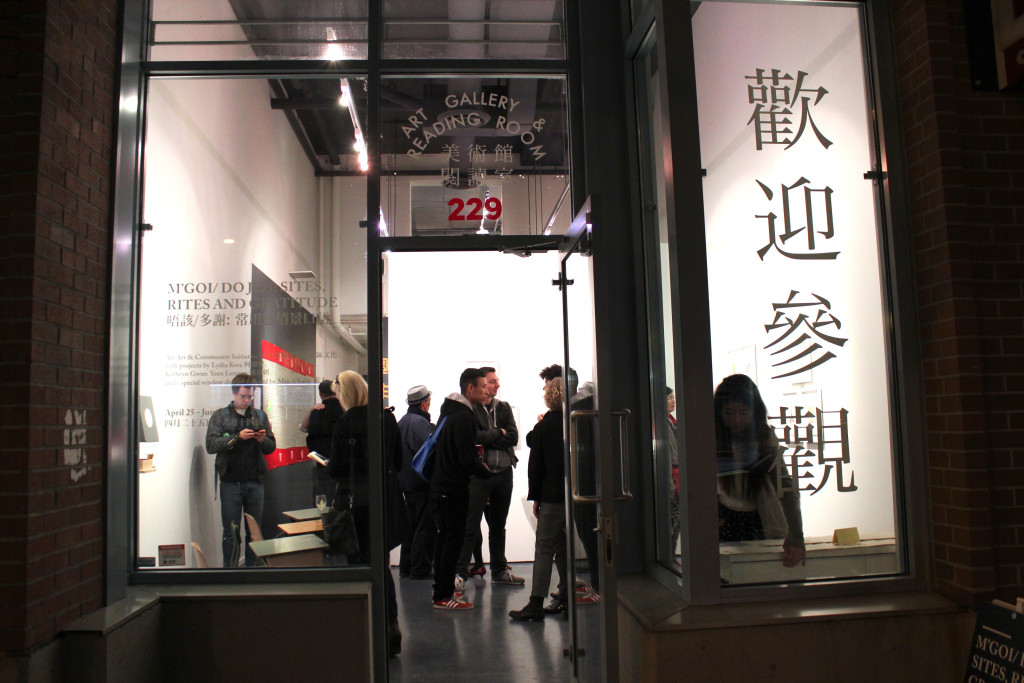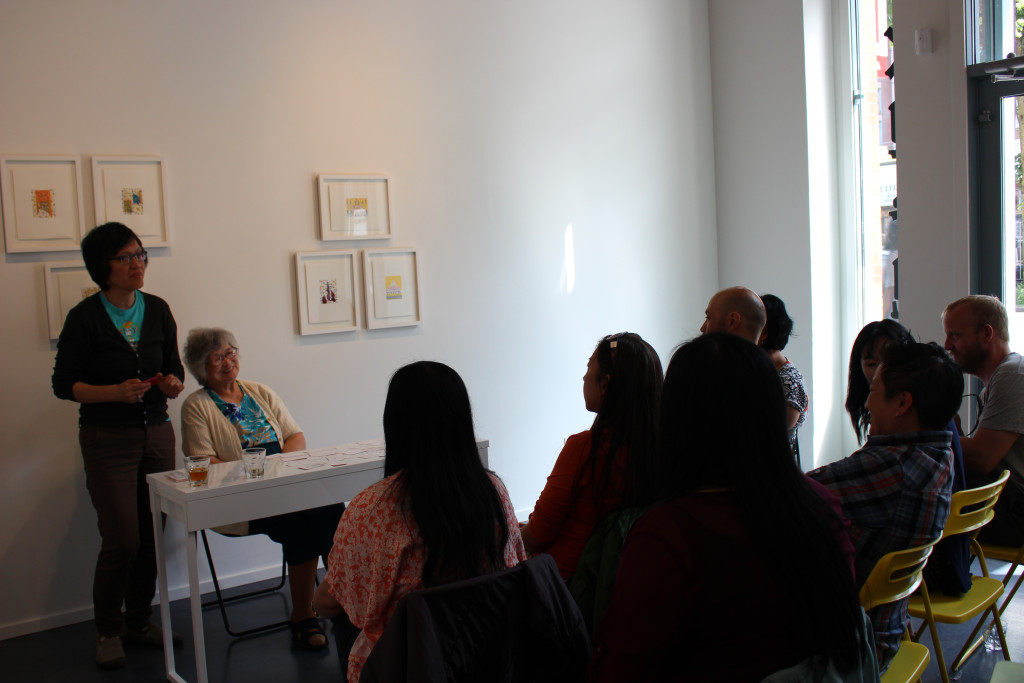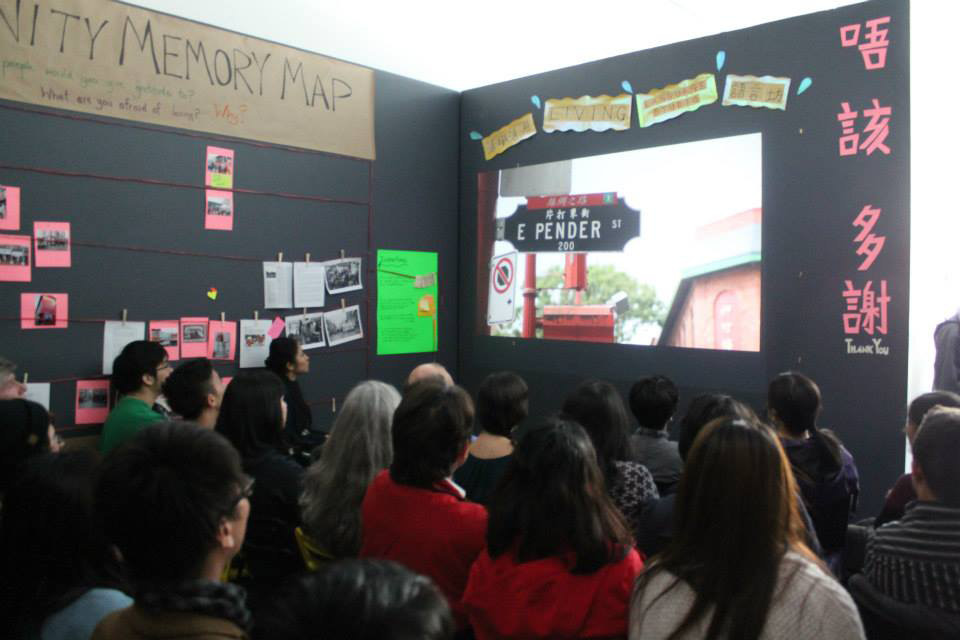SAYING “ASIAN”: CONSIDERING STRATEGIES TO EMBRACE DIVERSITY
WHILE CONFRONTING PROBLEMS OF ESSENTIALISATION AND OTHERING
The other day, Chris Lee, Director of the University of British Columbia’s brand new Asian Canadian and Asian Migration Studies Program, came to Chinatown for tea. Congratulating him on the birth of his then one-week old program, I asked how they defined “Asian Canadian.” With a bit of a chuckle, Chris shrugged his shoulders and said, “We’ve given up!”
The relationship between “Asian” and “Canadian” has a fraught and complicated history. Official policies of exclusion, such as the Chinese Head Tax, The Chinese Immigration Act of 1923 (also known as the Chinese Exclusion Act) and the Continuous Journey Regulation formalized the complication. And, even in the repeal of these policies, racism persisted.
“There will, I am sure, be general agreement with the view that the people of Canada do not wish, as a result of mass immigration, to make a fundamental alteration in the character of our population. Large-scale immigration from the Orient would change the fundamental composition of the Canadian population.”1
This is an excerpt from the May 1, 1947 speech to Parliament that saw the repeal of Canada’s racial immigration exclusion laws. The speaker, in this case, Canadian Prime Minister William Lyon MacKenzie King, defined Asia as something exterior to the self and the nation, the cultural influence of which must be tempered in relationship to the object of his jurisdiction: Canada. The legacy of MacKenzie King’s posture is an arguably problematic power dynamic where, in this Euro-lingual state, a strong transatlantic bias persists and, regardless of real demographic change or any hype around the “Rise of Asia” or the “Dawn of a Pacific Century,” the position of “Asian” within Canada continues to be subject to moderation and Othering.
Etymologically speaking, the word “Asia” comes from ancient Greece and refers to all places east of the Bosphorus, or beyond the Aegean Sea’s eastern shore. Using the term “Asia”, therefore, is about as precise as pointing towards Turkey and saying, “Those unknown, perhaps magical, potentially threatening places over there.” Importantly, it places Europe at the centre, figuratively and discursively, buttressing assumptions that Europe is a privileged point of reference from which identities may be mapped and defined. As has been well elucidated by others (such as Edward Said2 and Umberto Eco3), the loose reference, “them over there,” has led to misunderstandings, gross generalizations and, especially since the dawn of the industrial age, unhealthy power dynamics. When a European centre uses language like “Asian” or “Oriental,” those it is assumed occupy those categories are pushed to a cultural and geographic exterior in a way that exotifies, objectifies and negates humanity.
Correspondingly, a problem emerges when my white face, which implies a relationship to Europe, utters the word “Asian” in English, or, “Asiatique” in French. It is far too easy for the reader or listener to hear an application of exotifying mystique referring to an unknowable or inevitably emergent Other, rather than the precise lives, places and experiences I may intend.
On the other hand, when saying “Asian” in Asian languages, Japanese or Korean for example, there is a sense of empowerment that accompanies the term. In Japanese, uttering “Asia” may evoke the baggage of colonial pursuits and the nefarious results of early 20th century policies aimed at forcing Japan-centred Asian unity. However, depending on the context, it can also trigger aspirational pan-Asian dreams of a broad and powerful culture-scape with Hindu-Buddhist cultural/religious roots. It can also be a means for Othering that, in certain conversational contexts might refer to South East Asia. In Korean, with an underlay of shuddering colonial memory, the term offers a tempered dose of invigoration, implying independence from American or European dominance and the possibility of power through skillfully negotiated regional relationships.
Not only does “Asian” have different implications when uttered by different people in different linguistic and socio-cultural contexts, but it can de-humanize on both sides. Suggesting a white man is interested in Asia, for instance, has all kinds of discomforting implications. Often, when I am introduced as the Executive Director of Centre A, I am asked how I got interested in Asia, and particularly in Asian art. It is never assumed that since the age of 16 I have spent nearly a decade living on the other side of the Pacific; that I spend a significant amount of my lived time speaking languages other than English; or that I began working with professional artists while living in Korea and Japan, not because I was interested in Asia as a thing, but because I happened to be there. It is generally assumed that “Asian” is something fundamentally and necessarily other to myself. It is never assumed that the cultural scenes of New York, Berlin and even Vancouver might be more exotic and unknown to me than Seoul, Fukuoka or Chiang Mai. With squints of suspicion, envy or disinterest I am made to justify the geography of my cultural experience. However you frame it, to name something Asian means it is “ours” to some and “other” to others, rarely mundane, rarely shared and even more rarely seen to have the universality applied to things European.
Since its foundation, Centre A has dealt with the question of its own relationship to the word “Asian.” Through two conferences entitled Twisting the Box (2000) and Twisting the Box Again (2010), numerous board retreats and Strategic Planning sessions, Centre A has productively tackled the question, though never to resolution. In the end, the institution runs on questions, rather than conclusions about what the term “Asian” might imply.
Through curatorial and artistic practice, Centre A has taken it upon itself to facilitate cultural exchange; confront the idea that Asian is other; and to dig into the gritty cultural work that deals with the aspirations and concerns available to us as a result of the centuries-long history of transpacific migration, travel, communication and exchange. A huge amount of our programming attests to this purpose, including Centre A’s first exhibition The Bubble Tea Club: Vancouver Identity from a Contemporary Asian Art Perspective (2000), and later, Chinatown Modern (2003), Redress Express (2007), China Trade (2006), World Tea Party (2010), Yellow Signal (2012), Limits of Tolerance: Re-Framing Multicultural State Policy (2007), and Showroom (2008), as well as many other early and more recent exhibitions. Through my own curatorial practice, I am eager to engage Vancouver’s publics in the important work of local and transpacific cultural development while seeking to re-imagine the intercultural power structure inherited from the likes of MacKenzie King.

M’Goi/Doh Jeh: Sites, Rites and Gratitude, 2014, Centre A, Vancouver, British Columbia,
photo by Sora Park.
My first exhibition as curator of Centre A was an art and community initiative entitled, M’Goi/Doh Jeh: Sites, Rites and Gratitude. It ran from April 26 to June 14, 2014. With this show I wanted to express a desire for inclusive, intergenerational and cross-cultural conviviality that shows gratitude and respect to Chinatown, the place that Centre A now calls home. The posture of the show, rather than demonstrating the clarion confidence of an authoritative curator sharing famed treasures of the contemporary “East”, celebrating emergent heroes, elucidating the ivory tower’s freshest theory or offering a social analysis, was more participatory in character. Following a mode of engagement premised on notions of neighbourhood-based cultural production, language was a serious point of consideration. Not only did linguistic gesture figure in the individual artworks, but it was also present in the application of curatorial discourse strategy. The approach was somewhat modeled on the inquisitive deference one might find in an eager outgroup junior encountering an established, predominantly older community in the throes of intergenerational and cultural change. The sort of discourse strategy and curatorial posture employed was a variation on the junior-senior/ingroup-outgroup interactions embedded in many Asian languages.4
In this exhibition, my and Centre A’s status as newcomers to Chinatown — “outgroup-juniors” entering a landscape of more established cultural institutions and actors —necessitated that we take on an outgroup-junior posture. In my interpretation this implies that we engage in an inquisitive manner and take care not to be too bold or refined or to emphasize our own individuality in institutional, curatorial or individual terms, leaving ample entry points for participants and viewers alike. It’s akin to choosing to say, “I think the food was kind of delicious, you?” instead of saying, “The food was delicious.” While the second phrase is dependent on the primacy and authority of the individual, the first, leaving room for the other, is more deferential and signals interest in social connection.
I believe posture and discourse strategy are curation’s third dimension. Typically the curator applies artwork to a substrate (i.e. gallery space, public square or social context) and suggests a justification as to why the artist(s)’ work ought to be selected and installed. The standard method of discourse in curatorial practice is heavily laden with cultural assumptions — even when practiced using non-European languages, the language of curation most often articulates itself in a particular manner that finds roots in a European art system. In the Canadian case, as funding is so dependent on a peer jury system, assumptions about the interests, cultural vocabulary and grammar of the predominantly Eurolingual, transatlantic-leaning elite who participate in arts council juries then become an important consideration for those who are, or aspire to be, publicly-funded curators. This rests as a limit to inclusivity and to the realm of possibility, a structural impediment to developing languages of curation that are relevant to and legible in the polyglot, multi-sectoral neighbourhoods and communities that make up the real experience of Canadian life. It is therefore all the more important to raise the issue of considering the socio-linguistic aspects of a curator’s posture and discourse strategy. Exploring equally mundane, differently formulaic and hopefully less predictable approaches is essential to fostering diversity and opening space for varied linguistic styles in curatorial practice. My intent in foregrounding discourse strategy is to find means to permit comfort with voices that don’t necessarily conform to Euro-centric structures of cultural grammar, particularly as it pertains to visual art.
Building on this curatorial direction, M’Goi/Doh Jeh: Sites, Rites and Gratitude involved three particular initiatives: first, we changed our gallery signage under the direction of a neighbourhood elder; then we meditated on history and poetic possibility in the face of technological and neighbourhood change with a local writer; and next, we invigorated, imagined and considered the community through language learning and mapping with an energetic community builder.
One day, Mrs. Chang, a proudly 96-year-old woman who lives just a couple of blocks up from Centre A’s East Georgia Street home, came by wondering what we were. As my co-worker, Natalie Tan, attempted to explain to her in Cantonese, Mrs. Chang quickly instructed us that we should have Chinese language signage and that — in Chinese as well as in English — we should boldly let the public know that we are an art gallery and that they are welcome in the space. In particular she said that in big, bold lettering we should write “歡迎參觀” (“welcome” or “feel free to come in and see”) on our front window. We are a public gallery. The public needs to know they are welcome to come in! We followed her lead. Meanwhile, inside the gallery, the two other artists created a combination of meditative and community-engaged installations.
I met Lydia Kwa, an established poet/writer, on a March afternoon while purchasing pu’erh at Treasure Green, the tea shop right next door to Centre A. She was a bit standoffish at first. Critical of Centre A’s cool atmosphere and poor feng shui, she quipped, “I haven’t been there in a while.” Regardless, we quickly connected around shared struggle to grapple with the significance of the rolling drum beat of gentrification in the neighbourhood, in particular the impending closing of our East Georgia Street neighbour Ho Sun Hing. Canada’s oldest Chinese language print shop, Ho Sun Hing was slated to close after 106 years in business.5The chops and logos, pamphlets and wedding invitations created and printed there had defined the typography of the neighbourhood for a century. By the time of our encounter, Lydia had been stopping in to the print shop for nearly two years, building a relationship with the owner, Hilda Lam and her family, and collecting trays of foundry type. With the type, she created a series of mixed media print works, meditations on transformations in the publishing industry and the cultural technologies of Chinatown. Later, Lydia wrote couplets to accompany each piece and self-published a little unbound book entitled Linguistic Tantrums. Olivia, the owner of Treasure Green Tea, happened to have a copy on hand. Impressed, I invited Lydia to participate in the exhibition immediately. We showed the original mixed media works and invited the public to reflect on the work, write couplets of their own and drop them into a special wall-mounted box that we had purchased from Ho Sun Hing. Lydia then invited Hilda Lam to join us for a beautiful afternoon where the audience’s couplets were revealed and paired with Lydia’s works. It was called A Game of Couplets.

Lydia Kwa, Game of Couplets, 2014, Centre A,
photo by Natalie Tan.
The evening after I had met Lydia at Treasure Green, I was surfing around the internet looking into all things Chinatown, especially Ho Sun Hing and the then-recent activism that had been taking place around the Ming Sun-Uchida Building. Long having provided low-income housing to local seniors and having a history as a clan-based benevolent association and reading room society on Powell Street, Ming Sun had recently faced the threat of being torn down. In that evening Google journey, I came across the blog of Kathryn Gwun-Yeen Lennon, a spoken-word poet and community builder active on Ming Sun and other issues facing the community. She was also keen on enhancing her Cantonese language capacity. I invited her for tea in one email and quickly found that she was cc’d in communication from Lydia regarding Ho Sun Hing! A couple of days later, over tea at Centre A, I invited Kathryn to create a space for Cantonese language learning and to curate a series of neighbourhood-specific language classes. Cantonese is the lingua franca of Chinatown. She went above and beyond with Saturday School, a collaboration with language instructor Zoe Lam. These classes brought an engaged cross-cultural, intergenerational community on a language learning adventure that saw them using Cantonese, meeting people in the neighbourhood and learning oodles about this historic community. Classes were hosted in an interior gallery space Kathryn called the Living Language Studio. An ad hoc, temporary community centre of sorts, the Living Language Studio invited the public to share and map community memories, learn language, make friends and discuss the future of the community. The space hosted a myriad of events, including a Youth Community Film Screening; a fundraiser for the Hua Foundation, a local culture and food security activist group; as well as various other community meetings. Thanks to Kathryn’s initiatives, the gallery was a hotbed of community activity for the duration of the show.

Youth Community Film Screening, 2014, Centre A,
photo by Kathryn Lennon.
With this constellation of linguistic gestures, I sought to consider an alternative to the intensely Anglo-centric and transatlantic nature of the cultural scene in Vancouver, while creating a site for uncanonical contemporary culture-making that avoids essentializing tendencies. Through inclusive cross-cultural community building and providing mechanisms for the institutional and personal internalization of neighbourhood-relevant cultural technologies, I hoped to overcome the “us” and “them” problems of being identified as an “Asian” gallery, not to mention problems of sectoral discrimination, while confronting the realities of present life in Vancouver’s Chinatown. From here on, building on Centre A’s history and acknowledging our current Chinatown home, I hope to set a tone that fosters a linguistically diverse and aggressively inclusive approach to culture-making, one that avoids siloes of race, language, sector and medium as we work with myriad collaborators to tackle the vital questions of our time. It is intended that this approach will help us play our role as an agent of transpacific cultural development while being less encumbered by the problems incumbent with uttering the word “Asian.”
NOTES
1. House of Commons, Debates, May 1, 1947, 2644-2546.
2. Edward W. Said, Orientalism. New York: Vintage Books, 1979.
3. Umberto Eco, Serendipities: Language and Lunacy. Mariner Books, 1999.
4. Ingroup/outgroup, junior/senior distinctions are more than merely social custom—these distinctions are deeply embedded in some languages such as two I am fairly familiar with, Korean and Japanese. Through these distinctions there are specific modes of address employed that structure social relationships. In addition to demanding the use of honorific vocabulary, ingroup/outgroup and junior/senior distinctions also affect phrasing, altering the manner by which an individual might assert themselves. This is not necessarily to the negation of personal expression, or the contribution of ideas, but causes alternative strategies to be employed.
One book that informed my thinking about discourse strategy is:
Ron Scollon, Suzanne B.K. Scollon, and Rodney H. Jones, Intercultural Communication: A Discourse Approach. John Wiley & Sons. 2012.
5. John Mackie, “Canada’s Oldest Chinese Print Shop Closes at 6 p.m. Today, after 106 Years in Business.” Vancouver Sun, March 28, 2014. Accessed August 18, 2014. http://www.vancouversun.com/Canada oldest Chinese print shop closes today after years business/9671160/story.html
Images courtesy the author and Centre A
